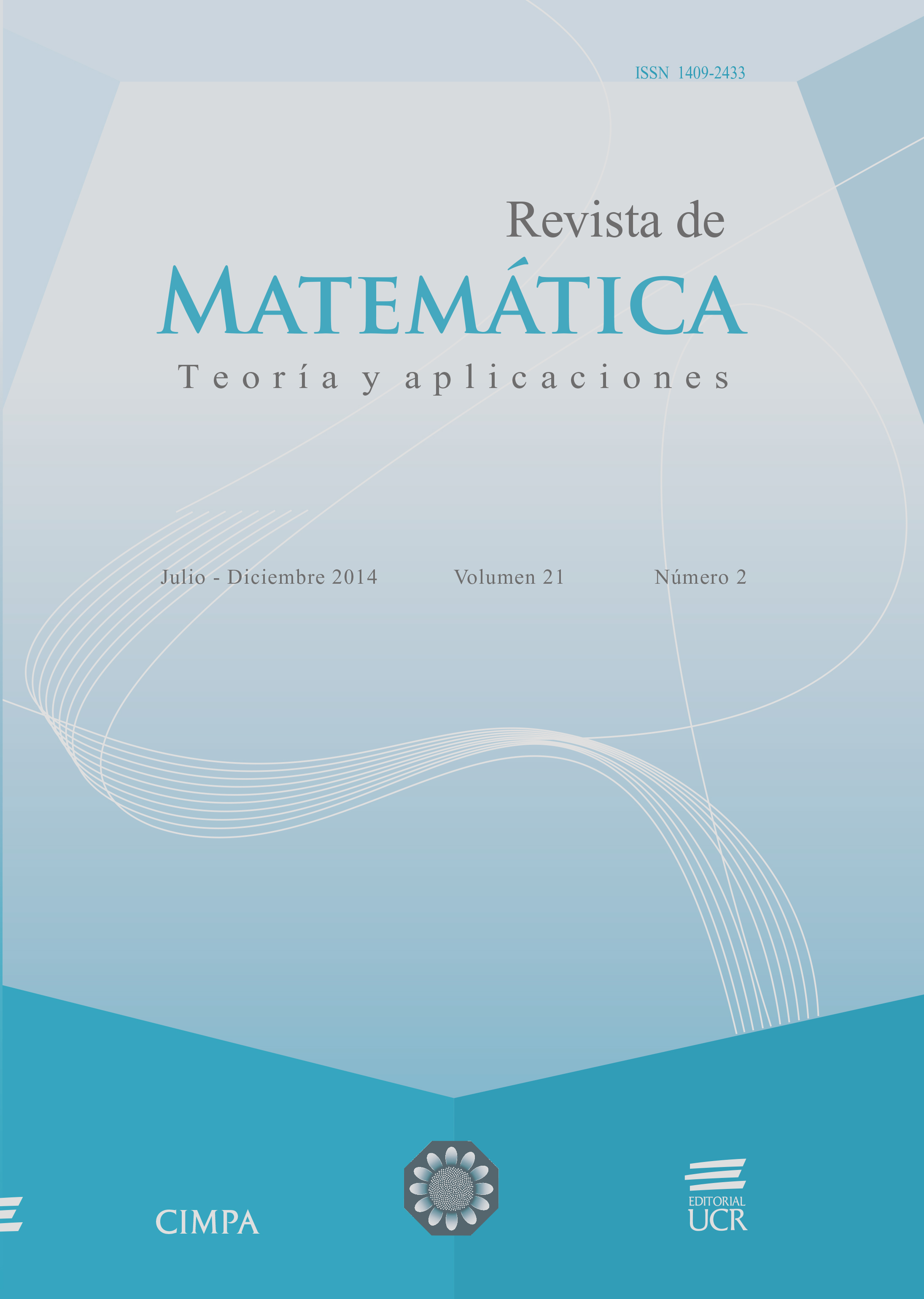Abstract
This paper presents multiobjective tabu/scatter search architecture with preference information based on reference points for problems of contin- uous nature. Features of this new version are: its interactive behavior, its deterministic approximation to Pareto-optimality solutions near the refer- ence point, and the possibility to change progressively the reference point to explore different preference regions. The approach does not impose any restrictions with respect to the location of the reference points in the objective space. On 2-objective to 10-objective optimization test problems the modified approach shows its efficacy and efficiency to find an adequate non-dominated set of solutions in the preferred region.
References
Bandyopadhyay, S.; Saha, S.; Maulik, U.; Deb, K. (2008) “A simulated annealing-based multiobjective optimization algorithm: AMOSA”, IEEE Transactions on Evolutionary Computation 12(3): 269–283.
Barbosa H.J.; Barreto A.M. (2001) “An interactive genetic algorithm with co-evolution of weights for multiobjective problems”, in: L. Spector, E.D. Goodman, A. Wu, W. Langdom, H.M. Voigt, M. Gen, S. Sen, M. Dorigo, S. Pezeshk, M.H. Garzon & E. Burke, (Eds.) Proceedings of the Genetic and Evolutionary Computation Conference (GECCO’2001), Morgan Kaufmann Publishers, San Francisco CA: 203–210
Beausoleil, R.P. (2006) “MOSS multiobjective scatter search applied to non-linear multiple criteria optimization”, European Journal of Operational Research 169(2): 426–449.
Beausoleil, R.P. (2008) “MOSS-II tabu/scatter search for nonlinear multi-objective optimization”, in: P. Siarry & Z. Michalewicz (Eds.) Advances in Metaheuristics for Hard Optimization, Natural Computing Series, Springer: 39–67.
Branke, J.; Kauler, T.; Schmeck, H. (2001) “Guidance in evolutionary multi-objective optimization”, Advances in Engineering Software 32: 499–
Cvetkovic, D.; Parmee, I. (1998) “Evolutionary design and multiobjective optimization”, Proceedings of the Sixth European Congress on Intelligent Techniques and Soft Computing (EUFIT), Aachen, Germany: 397–401.
Deb, K. (1999) “Solving goal programming problems using multi-objective genetic algorithms”, Proceedings of Congress on Evolutionary Computation: 77–84.
Deb, K. (2001) Multi-Objective Optimization using Evolutionary Algorithms. John Wiley & Sons, Chichester UK.
Deb, K.; Pratap, A.; Mayaravian, T.; (2001) “Constrained test problems for multi-objective evolutionary optimization”, in: E. Zitzler, K. Deb, L. Thiele, C. Coello & D. Corne (Eds.) First International Conference On Evolutionary Multi-criterion Optimization, Lecture Notes in Computer Science 1993, Springer-Verlag, London: 284–298.
Deb, K.; Thiele, L.; Laumanns, M.; Zitzler, E. (2002) “Scalable multi- objective optimization test problems”, in: Proceedings of the Congress on Evolutionary Computation (CEC-2002) Honolulu HW, Vol. 1. IEEE Service Center, Piscataway, NJ: 825–830.
Deb, K.; Sundar, J.; Bhaskara Rao, N.U.; Chaudhuri, S. (2006) “Reference point based multi-objective optimization using evolutionary algorithms”, International Journal of Computational Intelligence Research 2(3): 273–286.
Fonseca, C.M.; Fleming, P.J. (1993) “Genetic algorithm for multiobjective optimization: formulation, discussion and generalization”, in: S. Forrest (Ed.) Proceedings of the Fifth International Conference on Genetic Algorithms, Morgan Kaufman, San Mateo CA: 416–423.
Li, H.; Zhang, Q. (2009) “Multiobjective optimization problems with complicated Pareto sets, MOEA/D and NSGA-II ”, IEEE Transactions on Evolutionary Computation 13(2): 284–302.
Miettinen, D.K.; Lotov, A.V.; Kamenev, G.K.; Berezkin, V.E. (2003) “Integration of two multiobjective optimization methods for nonlinear problems”, Optimization Methods and Software 18(1): 63–80.
Molina, J.; Santana, L.V.; Hernández-Díaz, A.G.; Coello Coello, C.A.; Caballero, R. (2009) “g-dominance:reference point based dominance for multiobjective metaheuristics”, European Journal of Operational Research 197(2): 685–692.
Shukla, P.K.; Deb, K.; Tiwari, S. (2005) “Comparing classical generating methods with an evolutionary multi-objective optimization method”, Lecture Notes in Computer Science 3410, Springer-Verlag: 311–325
Thiele, L.; Miettinen, K.; Korhonen, P.; Molina, J. (2007) “A preference-based evolutionary algorithm for multiobjective optimization”, Evolutionary Computation 19(3): 411–436.
Wierzbicki, A.P. (1982) “A mathematical basis for satisficing decision making”, Mathematical Modelling 3(5): 391–405.
Wierzbicki, A.P. (1980) “The use of reference objectives in multiobjective optimization”, in: G. Fandel & T. Gal (Eds.) Multiple Criteria Decision Making. Theory and Application , Springer-Verlag, Berlin: 469–486.
Van Veldhuizen, D.A.; Lamont, G.B. (1998) “Evolutionary computation and convergence to a Pareto front”, in: J.R. Koza (Ed.) Late Breaking Papers at the Genetic Programming Conferece Stanford University, Stanford CA: 221–228.
Zitzler, E.; Thiele, L.; Bader, J. (2008) “SPAM: Set preference algorithm optimization”, in: G. Rudolph et al. (Eds.) Parallel Problem Solving from Nature (PPSN X), Dortmund, Lecture Notes in Computer Science 5199, Springer-Verlag: 847–858.

This work is licensed under a Creative Commons Attribution-NonCommercial-ShareAlike 4.0 International License.
Copyright (c) 2014 Revista de Matemática: Teoría y Aplicaciones
